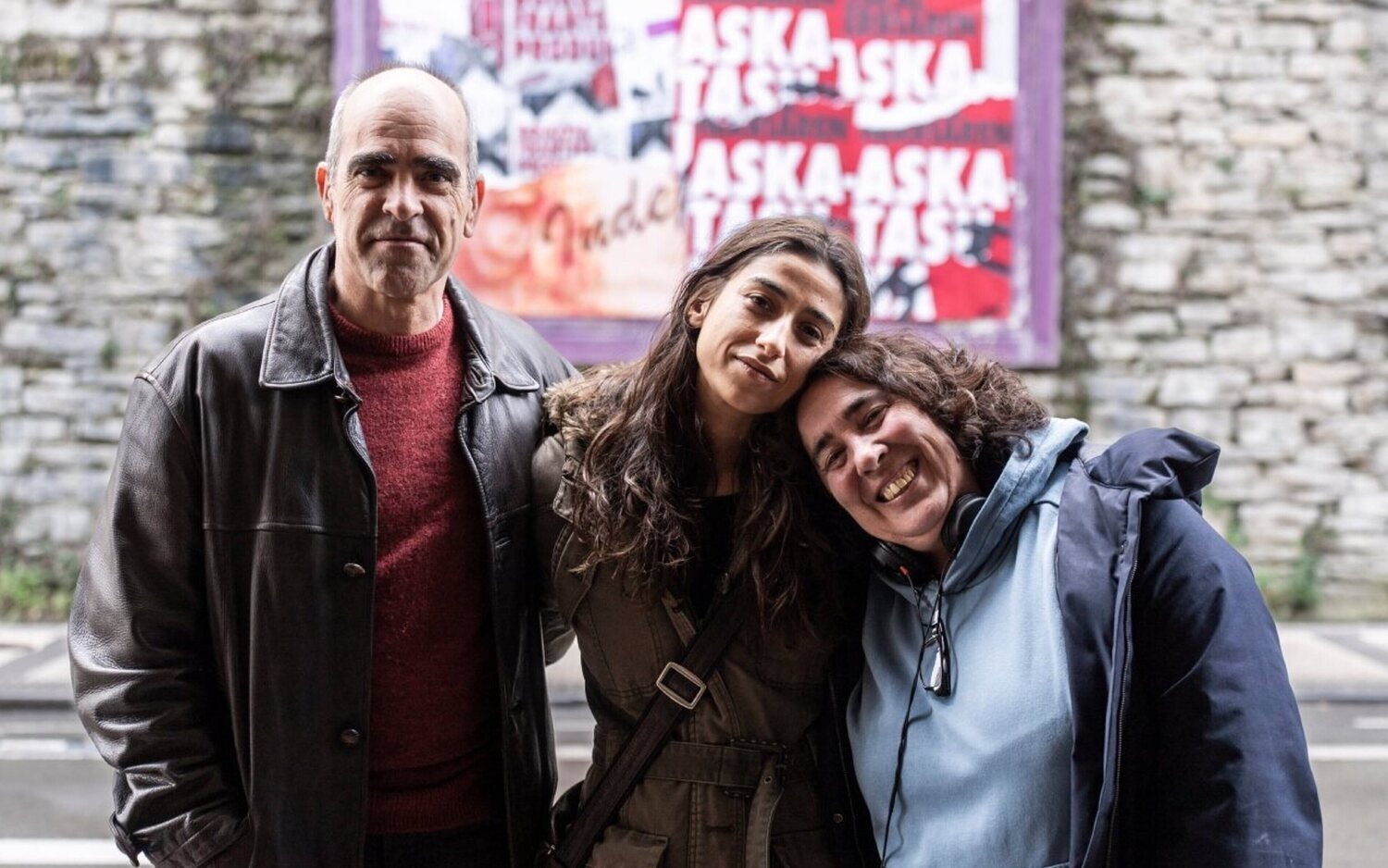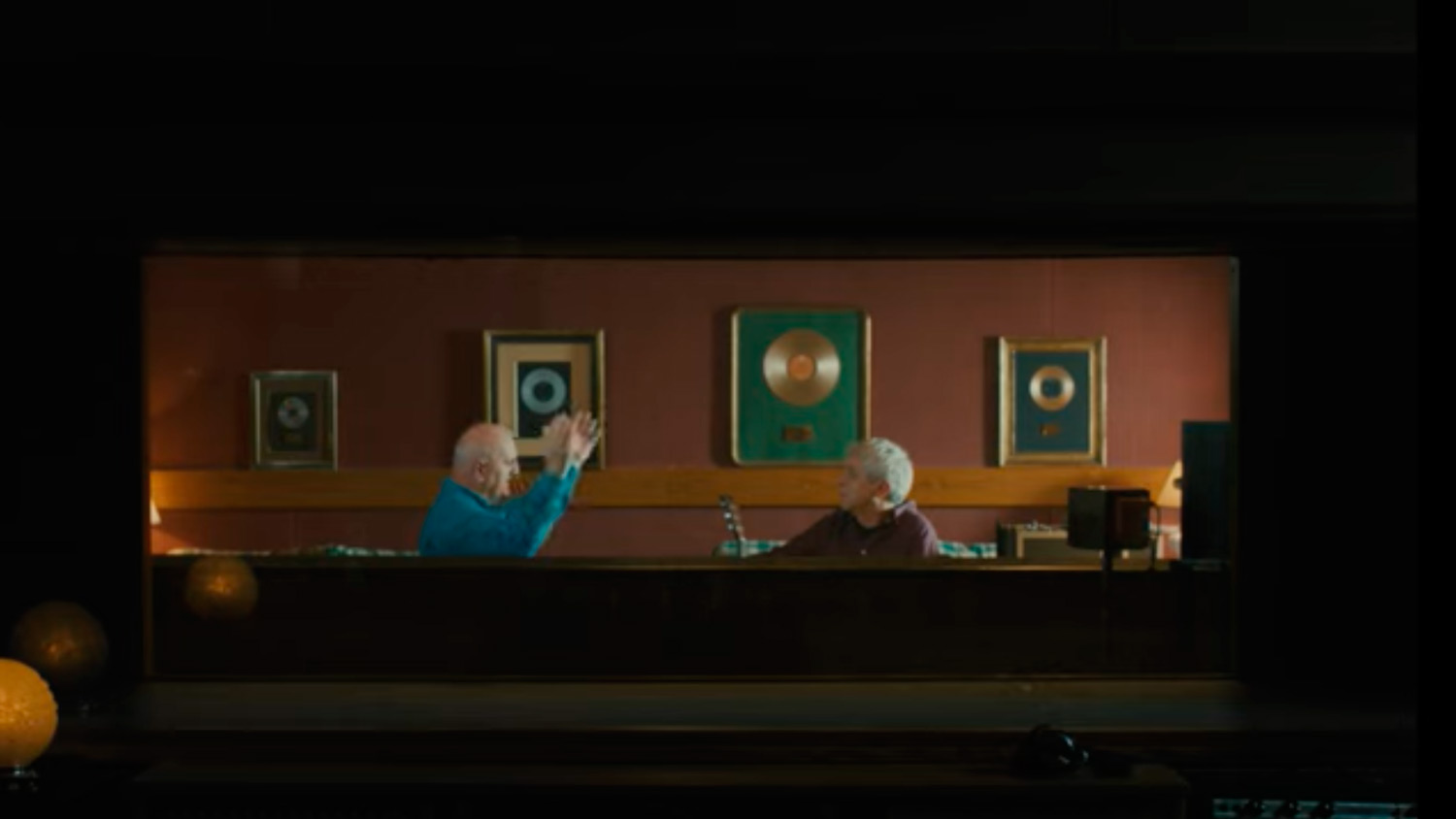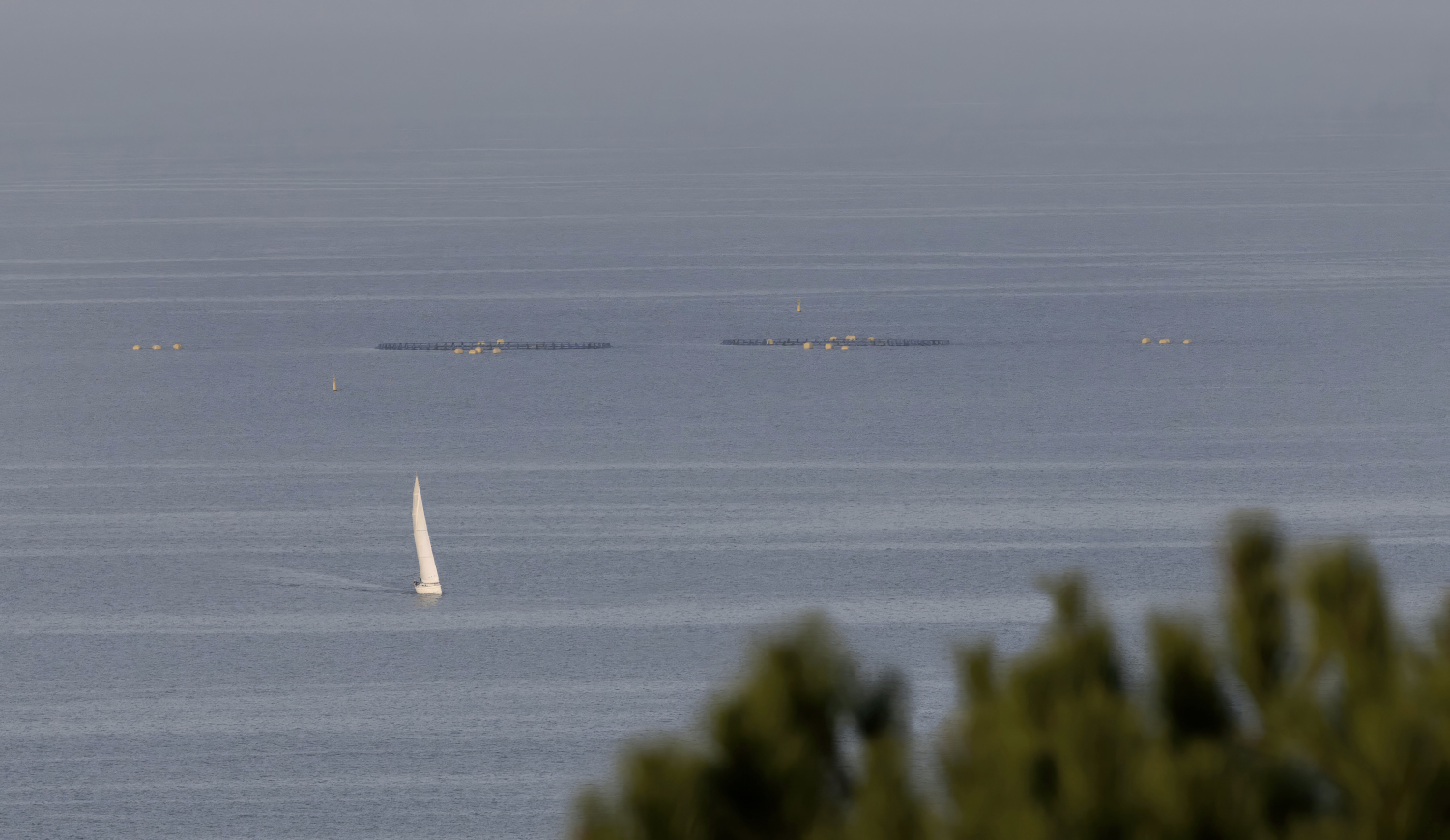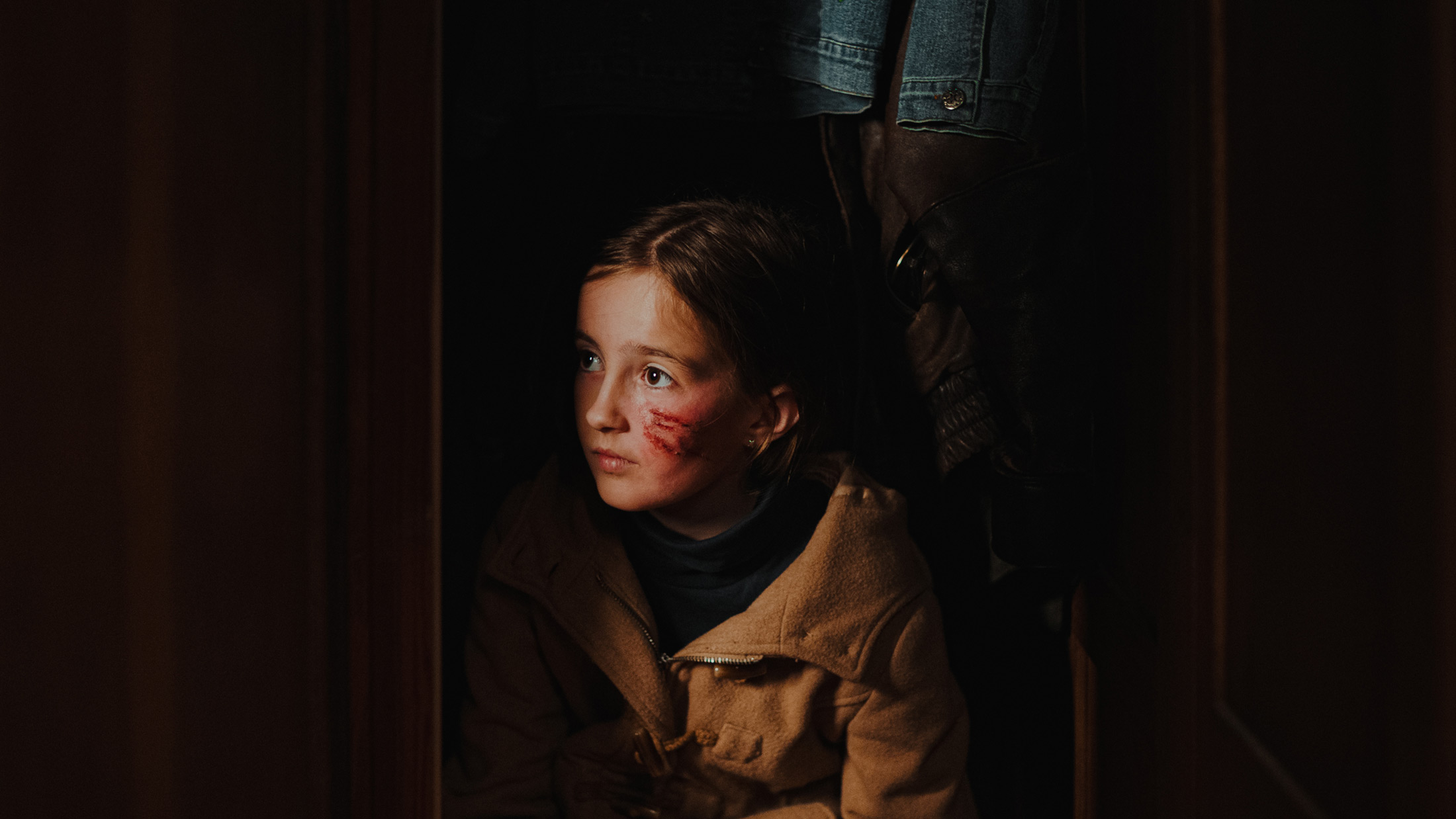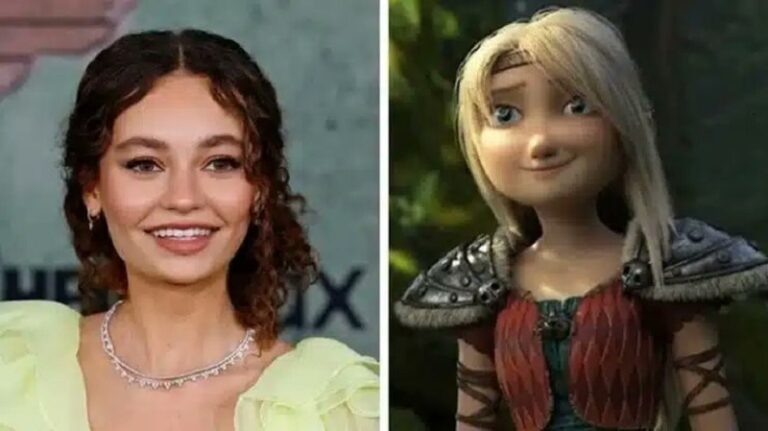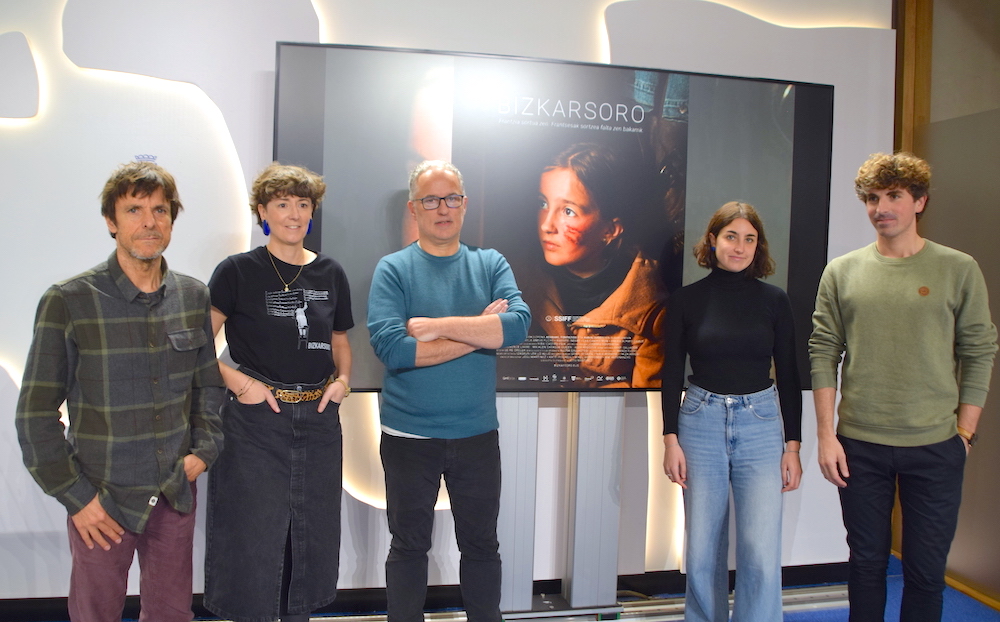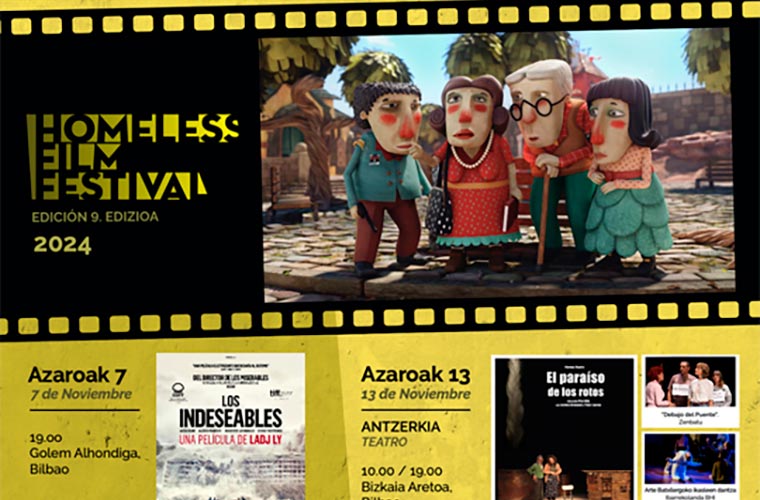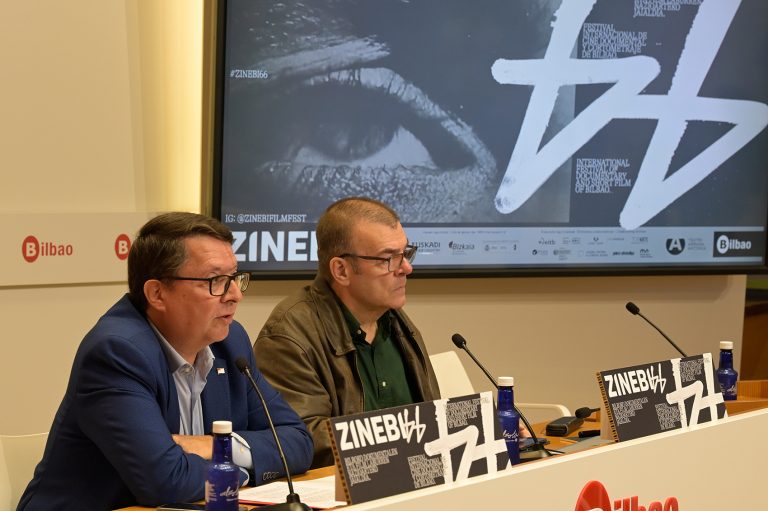"Anger, anger and the desire for revenge can also be the motors of a woman"
- Nina is the chronicle of a sign announced, using the term Irantzu Varela. The film now on the big screen shows how, after 30 years, a wounded woman returns to the village with a shotgun that suffers a constant form of menstruation to kill a man who suffered serious sexual abuse when he was young. This woman is Patricia López Arnaiz, also in Nina, Cocó's mother, 20,000 boyfriends, or in Anerena Ane. Inner strength and fragility rolled in two eyes.

Patricia López Arnaiz. Vitoria, 1981
Actor. He studied Advertising and Public Relations at the UPV/EHU in Leioa and at the age of 25 he began performing theatre and interpreting courses at the Ortzai Theatre School in Vitoria. In 2010 he took part in the film in 80 days and from 2017 he assumed the role of sister of Amaia Salazar in the trilogy of the Baztan. Since then he has not been standing still. In 2021 he won the Goya Prize with Ane and this year he has been a candidate with 20,000 bee awards. In total he has participated in twenty films and eight series. The house of Bernarda Alba has just been done in the theater under the direction of Pamplona Alfredo Sanzol and has worked with another Pamplona, Andrea Jaurrieta, in Nina. After its premiere at the Málaga Film Festival and the Special Prize of the Jury of Critics, it will arrive in theatres on May 10.
Was the Nina shooting a sort of interpretive marathon? No doubt. It was a very hard job. He's a character with a huge wound. In this continuous suffering comes to a
critical moment when the passion for revenge awakens him, as he has nothing to lose. This return to the village will put you back in touch with people and places. It's not just memories, it's physical links. When he returns to the people, Pandora's box opens. Each sequence is to re-puncture the wound.
The first scene of five minutes of tension already shows what the style of the film will look like… We start very high from the foreground. It's usually a character presentation, and then the emotional temperature increases with the movie, but not here. Director Andrea
Jaurrieta and I worked hard to be clear about what happened before and connect with emotions.
With few texts it counts a lot, right? Our job is to live the character's current situation, whether it's text or not. My character doesn't rest in the whole movie. Pain and blood
are always present. There is no plane that does not affect this wound.
In May last year we finished the six-week shoot. I was very comfortable with Mundaka's magnificent work team, but emotionally it was a very passionate job, and I finally realized it. When I got home, the bill came to me. Suddenly I had a big swing. I've had other hard threads, but not so hard. If you dedicate eleven hours a day to this situation of sexual abuse feeding this imaginary, emotional exhaustion is very profound. I needed some healing time to clean up all of this.
How
do you prepare the character? First, I do a thorough analysis of the script. I'm writing ideas
by making a schema on multiple columns. Then I synthesize it, to understand what's going on and after all that I learn text. Throughout this time of analysis, I work with imagination. I'm circling the car or when I'm on the mountain with the dog. I like peace of mind to be enough to deploy a kind of network and build a character to gather in it: readings, music...
Before I start the tests, I like to have everything ready and bring a proposal. Then the collaboration with the director begins and the important thing is to find a common language. When written according to the human condition, a text not only tells situations and facts, but the experiences of the characters in a coherent way. If all of this is not very clear, you yourself, as an actor, have to get the right thing.
In the case of Nina, the garments help. Of course! Andrea has great taste and in that sense this film seems very original and different to me. It provides a very special and powerful aesthetic proposal. It's very pictorial. Red colour, for example, is of vital importance. Red of blood and clothing. He's very cinematic and he gets an iconic character. Landscapes are
also spectacular. It's a film clearly visible in film.
In the film we see very well some mechanisms justifying patriarchy to whitewash abuses: we were very in love... our love story was very nice... That’s right. I think it is very clear here that violence is a case. It is possible to speak of consensus when there is equality of conditions, but when a person is a child or adolescent, for example, the relationship is very asymmetrical, since a minor does not have a vital journey sufficient to have emotional resources and be able to make a free decision. And it becomes even
more fragile when the abuser is a powerful figure because he has older age, experience, social or intellectual status.
I hope this film will help identify what crime is. Fortunately, we are moving forward and things are changing in recent years. This is very well seen, for example, in the book The Consent, published three years ago by the French writer Vanessa Springora. He tells how he was seduced by the famous 50-year-old writer Gabriel Matzneff at the age of 14. Pederasta was famous, proud to have in public and in her books that she lay with girls and boys, and was allowed all for her prestige. In this film, the girl also felt very much in love at first, but that doesn't justify abuse.
The complicit silence of the people is also criticized. Yes. Although everyone knew the truth, nobody accompanied the girl and nobody said anything against the famous man. This tells us how many cases of violence we allow voluntarily or involuntarily. So
the important thing is to learn how to identify aggressors and aggressions. In cultural artistic environments, it sometimes happens that fascination generates vulnerability.
Have you ever felt harassment in Spanish cinema? Complaints are emerging. In the field of cinema there is a clear hierarchy and a great need
for work. All of this puts many women in a vulnerable position. However, certain behaviors that 40 years ago were considered normal are not now accepted and the victims, with great courage, denounce despite putting their future work at risk.
What is the main message of this film? This is a Western. The hunger for revenge is what moves the protagonist. What happens is that revenge is something that
men have always conquered. Based on the homonymous work of Nina José Ramón Fernández, at the Kaioa de Chejov, where forgiveness and love prevail, but this film seeks revenge. It shows that a woman can also be avenged. Anger, anger and the desire for revenge can also be the motors of a woman. In short, it is an exercise of empowerment.
You have recently performed Angustias in La casa de Bernarda Alba. Do you see any relationship between the two characters? Yes. Both
are victims of sexual violence. This tragedy leaves Lorca. It is an extreme situation. For Anguish to marry Peper is his last chance to leave this suffocating house, as for Nina. Bernarda and her daughters are people forced by the system, condemned to perpetuate the system itself. Bernarda's house is a microcosm that represents the system and
Angustias wants to escape there, but discovers that what is out is not much better. Being a woman, you can't escape.
Is it frustrating to think that a better world cannot be achieved? Of course, but that is the situation that many people in the world experience from slavery, poverty, precariousness or violence. That is the case and we
must not look the other way.
Did you want to go back to the theater? Yeah, big. In short, it has been an opportunity to come back to my origin and has helped me rethink why I am in this. It has been very nice months since we premiered in February, but we are now over. In
Madrid we have been two months and have been in five other cities, including Pamplona, where the director Alfredo Sanzol is. Everything has been very nice and now I feel the need to remake films.
He has made very intense characters, especially in the last six years. Why do you think they are looking for you? Directors should say that.
Andrea told me that what she wanted was a mixture of fragility and strength. I got caught up with the idea of making a Western. The exploration of this code has been very interesting, especially since we have not remained in the empty code. We've played a Western, but seeing what's going on inside that protagonist.
Was it a tough decision for you to become a professional actor? I started studying theater at
25 years old, but my intention was not to be a professional. I studied advertising in Leioa, but I didn't like it and when I finished I went to work in a bar. I was in different places, among them as a monitor in the dining room of a ikastola. I have always had the need to show what I have inside and for that I have travelled different paths.
My current agent saw me in the school theater and called me to work on a project. So I took part in the movie in 80 days of Moriarti, but then I kept working and doing courses. Every now and then came the little things, the characters in a sentence. I made them, but I didn't particularly enjoy them. I didn't know whether or not I liked it as a profession. When I was 36 years old, seven years ago, I suddenly did the test for Baztan's trilogy for a secondary character, and there I realized that this work I really like. I had to make a character, and I saw that everything I learned served me for it. I applied for leave just in case, but I started coming in a number of jobs and I dedicated it quickly. So I sent a message asking for voluntary leave and it was a memorable moment. Irreversible.
They have been very intense years. Until then, my work was a source of income and is now at the center of my life. You have to organize everything around this axis. Everything is changing. There is no routine.
And how do you bring change? I think in my personality there's something to do with that, but you also have to go back to the source. I live in an Alavese town and I need to go home and be
with my family and my people. I need to retire from time to time. When you go outside, there are lots of stimuli. The exhibition is impressive. It's hard to imagine what it costs to go to festivals or promote. It often erodes more than a shoot. The truth is that when I disembark I go to the village and you heal me there. On the other hand, it is a very nice piece of work and I quickly get the illusion when new projects come to me.
How do you see the film situation in Basque Country? It's at a very good time. There's a lot of friction going on, and in addition, the motion of film that's being created here is really interesting. There is a lot of quality and the presence of Euskera on the large screen is normalizing. This has overcome a great barrier. Lately it is clear that people from outside want to watch the film that has been
made here. There is a great talent.
How do you have a near future? On
May 20 we will begin to film a new film in Euskadi and Madrid, in which I will be the protagonist. And I think about resting in summer.
A conference for architects has just been held in Madrid to discuss the crisis of the professional architect. They have distinguished the traditional and contemporary way of being an architect. What is traditional? From the epic architect who appears in The Brutalist, where... [+]
Itoiz, udako sesioak filma estreinatu dute zinema aretoetan. Juan Carlos Perez taldekidearen hitz eta doinuak biltzen ditu Larraitz Zuazo, Zuri Goikoetxea eta Ainhoa Andrakaren filmak. Haiekin mintzatu gara Metropoli Foralean.













